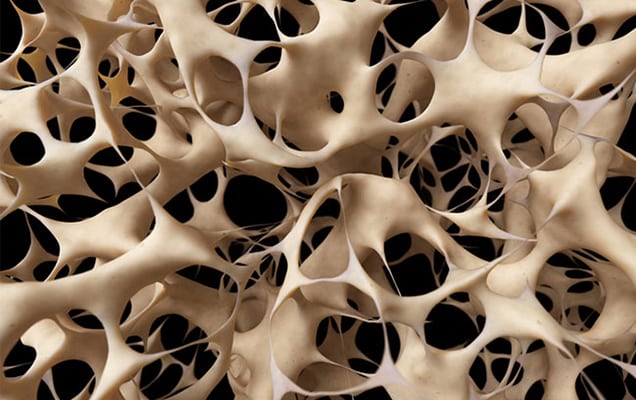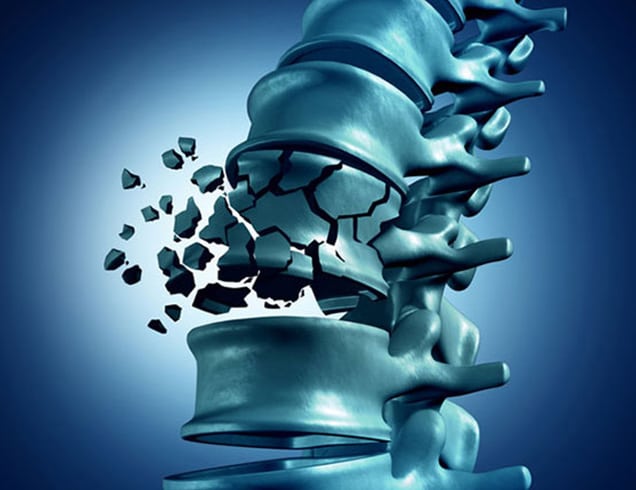
Learn more about how osteoporosis gradually develops, resulting in thinning of bone density and weakening.
Osteoporosis is a chronic condition that causes your bones to become weak and brittle. Your bones can get so weak that just a mild stress such as a big sneeze could cause a fracture. In the process of osteoporosis, your body’s ability to create new bone is diminished. At the same time, the removal of old bone continues at the normal rate. The most common locations for an osteoporosis-related fracture are:
- Spine
- Wrist
- Hip
CONTACT US TODAY
Causes
By the time you reach age 30, your bones have peaked in mass and density. The higher your peak density, the stronger your bones. If you did not develop strong bones, you are likely to have osteoporosis as you get older.
High levels of the thyroid hormone deplete your bones. Medications for cancer, seizures, acid reflux, and corticosteroids may also cause a loss of bone density. If you have lifelong low intake of calcium, your bones may start to lose mass at an earlier age than people who consume the recommended daily allowance of this mineral. Women are at an especially high risk of osteoporosis after menopause, because loss of estrogen hastens the loss of bone density. As men age, their testosterone level decreases, which increases their risk of osteoporosis—but not by as much as the risk for women.
Family history, a short stature, and being of Caucasian or Asian descent also increases your risk of osteoporosis. Behavioral and lifestyle factors also play into osteoporosis. If you have an eating disorder, you may lose bone density due to a lack of nutrients. If you are sedentary, use tobacco, or consume more than two servings of alcohol per day, your risk of osteoporosis is increased.

Symptoms
The symptoms of osteoporosis are only evident once the condition is in its advanced stages. After your bones are already significantly weakened, you may notice back pain due to fractured or compressed vertebrae. You may lose stature or develop a stooped or hunched posture. A fall from a standing height may cause you to fracture a bone.
Treatments
Your treatment plan for osteoporosis begins with a bone density scan. You may be given a prescription bisphosphonate medication to help with the bone remodeling process. These medications can also be administered as a shot four to six times per year.
You may also be prescribed an exercise program, such as taking daily walks. Weight-bearing exercise has been shown to help maintain or improve bone density. Your doctor might also prescribe hormone replacement therapy. Restoring your estrogen level soon after menopause might help you to maintain your bone density. There are some medications that use compounds similar to estrogen that may also help to strengthen your bones.
Testosterone replacement therapy may help for men. Some newer medicines may also help to reduce the effects of osteoporosis, but long-term studies have not yet been completed to determine their effectiveness at preventing fractures.
